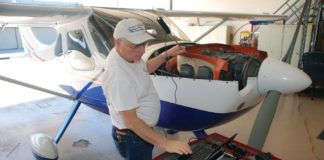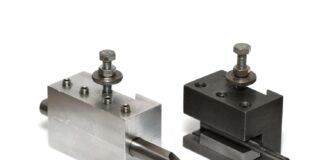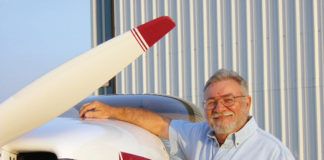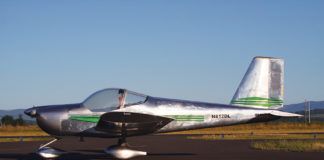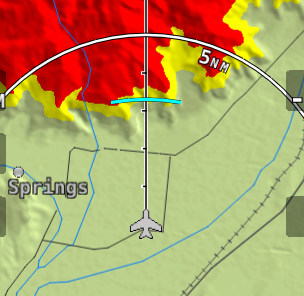
I like to cruise high because it is generally smoother, cooler, and you have a better view of the weather around you. And I like to stay high as long as I can – which means that I descend pretty quickly when it is time to go down. In decades past, pilots used to have to do a bunch of mental math to figure out when to start down to get to the approach fix or pattern altitude in time, basing their calculations on descent speed, desired rate, distance to go, and winds. It was fun to make it come out right, considering all of the variables.
I was thinking about this the other day as I came home from a trip at 13.5k’, getting ready to start down for our field. Instead of all the math, I had the new secret weapon that most of the EFIS manufacturers have adopted – the “Green Banana”. The banana is a little arc that shows on the map where you will be when you reach the preselected altitude given the current rate of descent (or climb). The banana moves on the map as your speed and descent rate change, so all you have to do is nose over and adjust the pitch and speed to put the Banana on your destination (assuming you have chosen the pattern altitude on the preset). If the autopilot is flying, you can fine-tune this with the desired descent rate. If you’re giving George the day off, you simply trim to get the rate you need to pin the banana where you want.
Once I have dialed in the desired rate, I only have to monitor airspeed (to keep it below redline) and engine power (to keep it at or below 75%, since I almost always fly lean of peak). Up high, airspeed’s the big concern – as you get lower, and the air gets thicker, airspeed drops, but power goes up, so you need to start throttling back below 8,000’ msl (or so). Don’t forget to feel for bumps as well – invariably, you’ll drop from smooth air down into the rough stuff, and unfortunately, that means slowing to your favorite rough air penetration speed to keep all the parts together – it’s the prudent thing to do.










